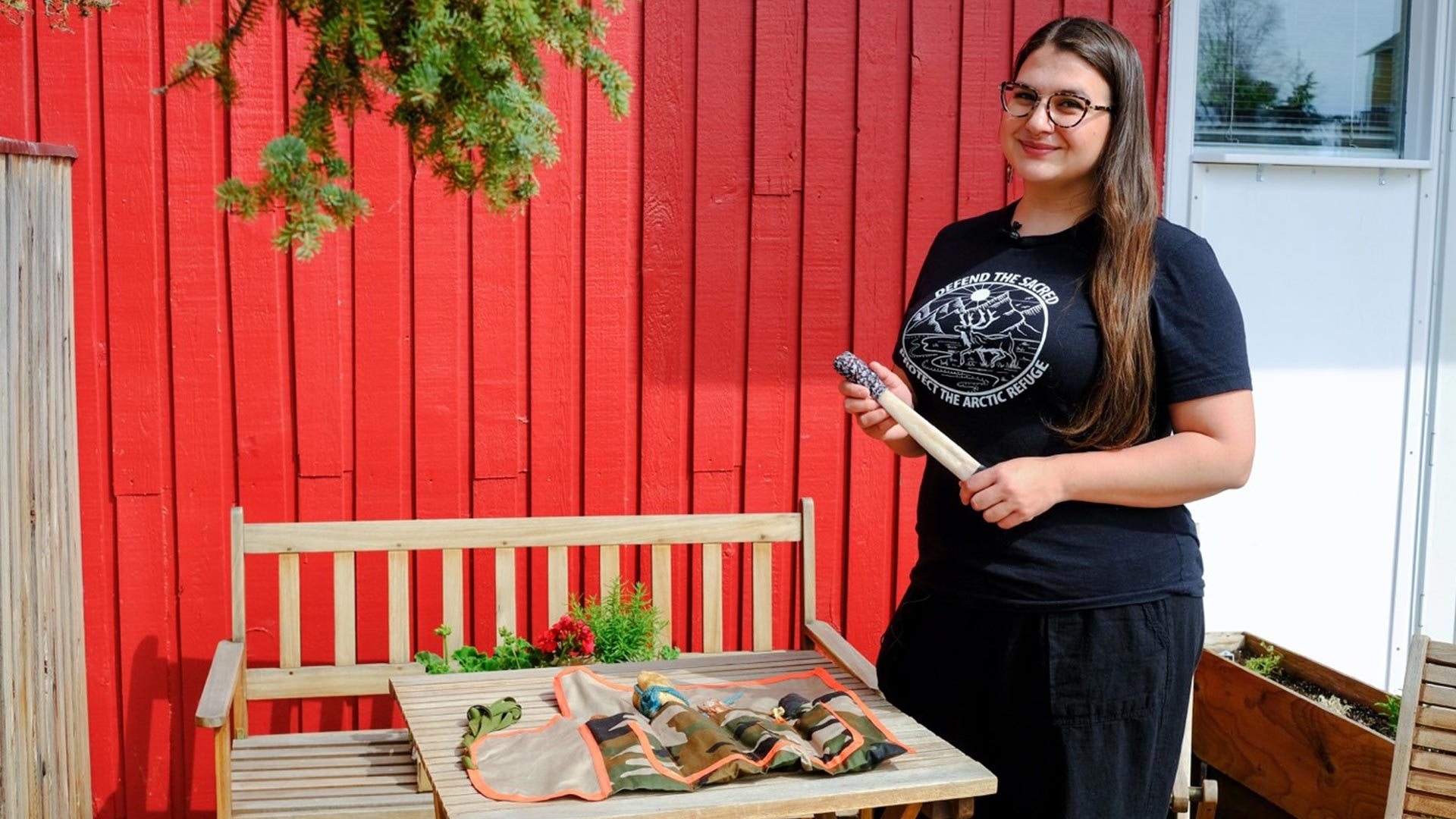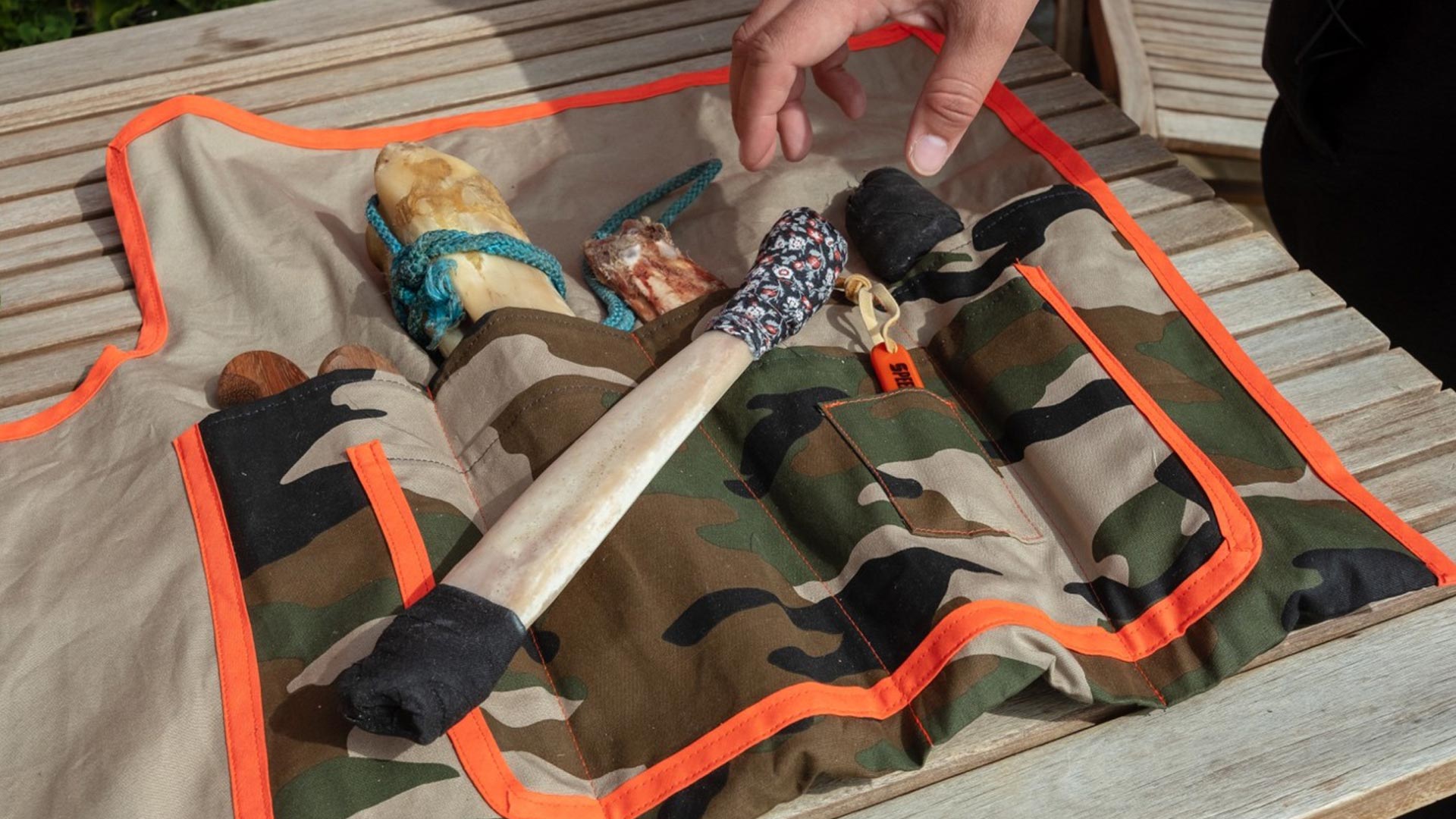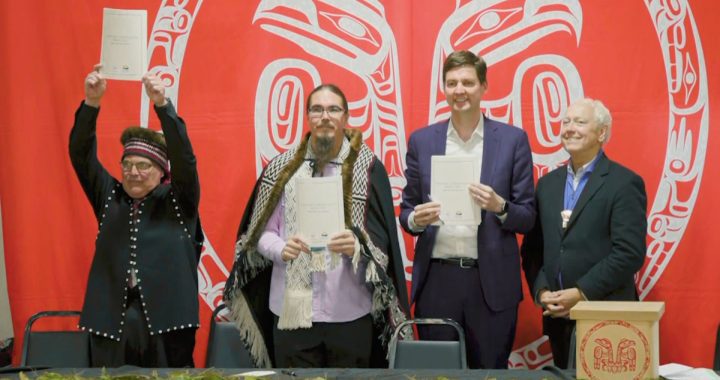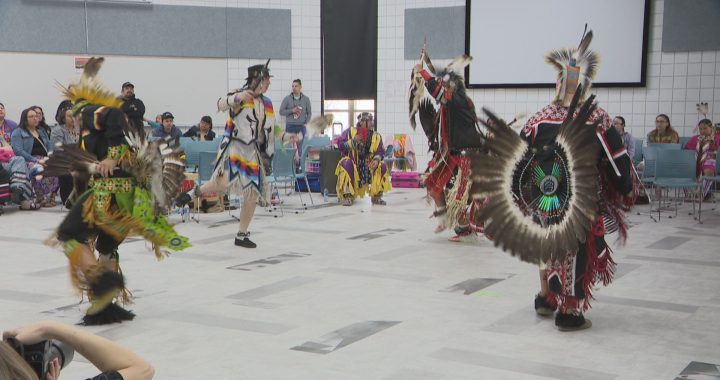Tania Larsson never imagined she’d sit behind a computer screen as she instructed the how to make traditional dene tools out of caribou bones.
Crafting hide scraping tools was always something she’d learned at annual spring hide camps, among elders and tanners of all ages and skill levels in the Northwest Territories.
The COVID-19 pandemic restrictions may have stopped physical gatherings for tanning this year, but it didn’t hinder Larsson’s commitment to share her knowledge.
The medium changed to Zoom video conferencing, but the message of patience and connection did not.
“It was nice to do it from home because I have all the tools. But it was completely different. I do not know how teachers do it,” Larsson said.

The workshop was hosted by local not-for-profit N.W.T. Aboriginal Sports Circle (NWTASC) and drew over 25 participants from as far away as Alaska.
“Our goal was to have one thing a day; sport and recreation for Indigenous people isn’t just conventional sports,” said Beth Hudson, leadership development coordinator for the NWTASC. “They serve all the communities in the NWT. COVID-19 really forced us to think outside the box to keep people healthy and active.”
The organization has been hosting workshops every night during the pandemic. According to Hudson three of the hide tanning participants have already taken what they learned and have created their own hide scrapers.
The Gwich’in jewelry maker is a household name across the north, and she participated in her first traditional tool making workshop when she helped organize with not-for-profit Dene Nahjo (“our way of life”).
“Normally you wouldn’t have to host a workshop, normally these things would be passed down to you or someone in your community could make these tools,” said Larsson who spent her early years in France, till she was a teenagr and moved back to the north.
“It was interesting to be with people of all ages and have different people share their tool pattern with us so we could replicate it and share their story of how they made it, which one was their favourite. It put a lot of pride in those object,” she said.
Larsson played an integral role in the resurgence of hide tanning camps across the N.W.T.
In her latest workshop she took many questions on everything from how to sharpen a tool, how to remove the bone from the leg, clean the bone and what to do with the rest of leg afterwards.
As she shaped the sharp edge of the hide scraper with her handheld bevel, she took more questions.
“Culturally seeing a moose scraper on a caribou hide, is that okay or would you keep caribou bones for caribou hide,” one participant asked.
Throughout the workshop Larsson stressed that her workshop was just one way of learning, but that participants must connect with their community to understand the stories, history and protocol behind handling and care of animal bones and hides.
“I don’t have all the answers and this workshop will give you a list of questions to seek out in your community with your own Elders and knowledge holders,” Larsson said.
She also recognized that as adaptable and resilient Indigenous people are using the latest technology to share values and knowledge, old infrastructure is a barrier for many to participate in workshops in real-time.
“I am lucky to be able to connect on workshops but many people in the communities cannot because of the connectivity to the internet. Even though we are all in this pandemic not all of us are experiencing it the same,” she said.
NWTASC has posted a few dozen workshops online for this reason.

Hide tanning camps are full of conversations and connections with the land, the animals and the community. Larsson was gifted enough bones this year where she would have been able to trade and give some tools away to other tanners.
“It’s really hard to be separated from everyone I’d be working with. That’s my time to hear stories and tell stories and build on friendships. It is hard not to have that sense of community. But it is important we are safe and those who are teaching these life lessons are safe and able to do that in the future,” she said.









